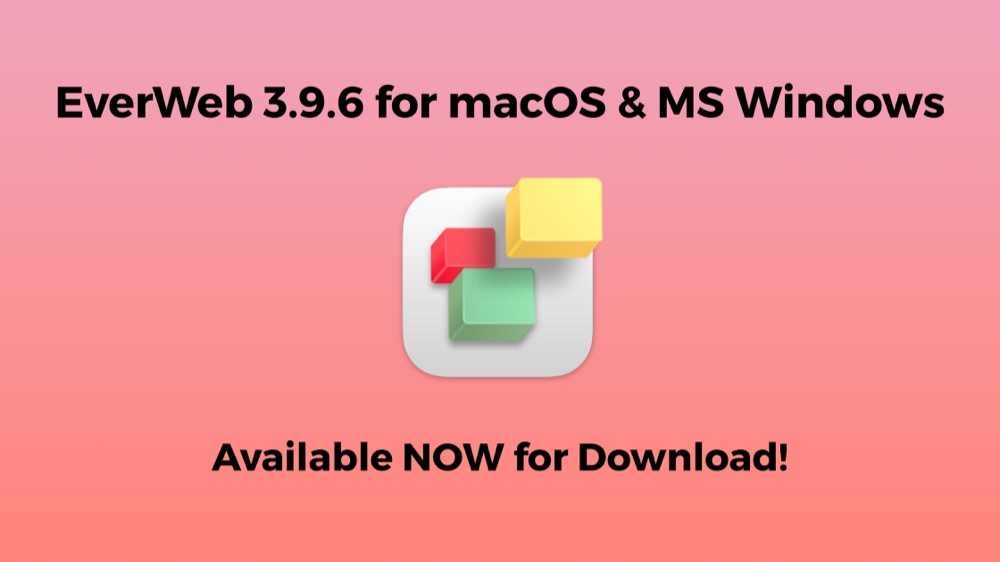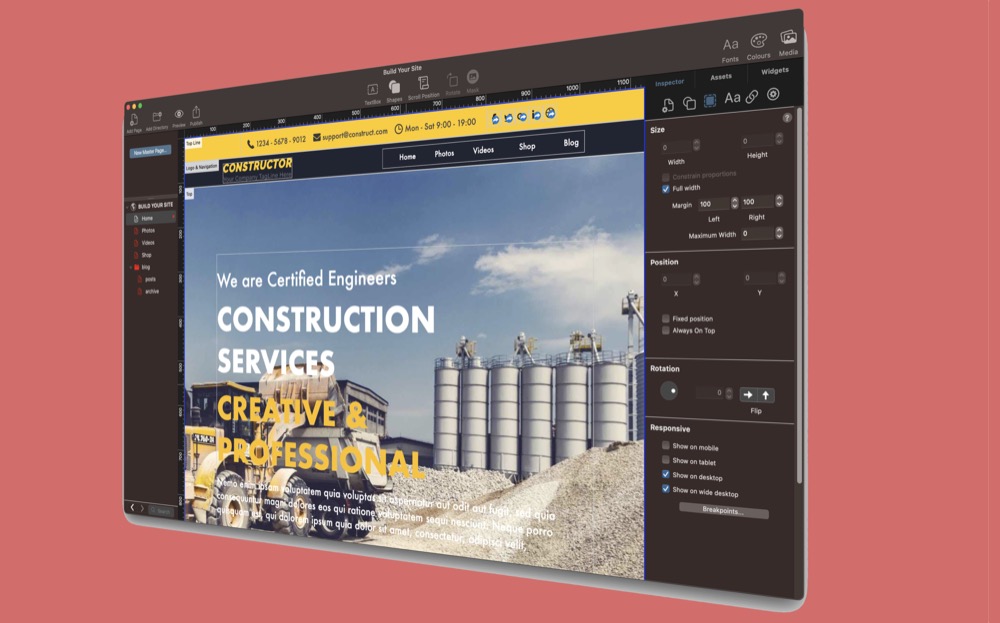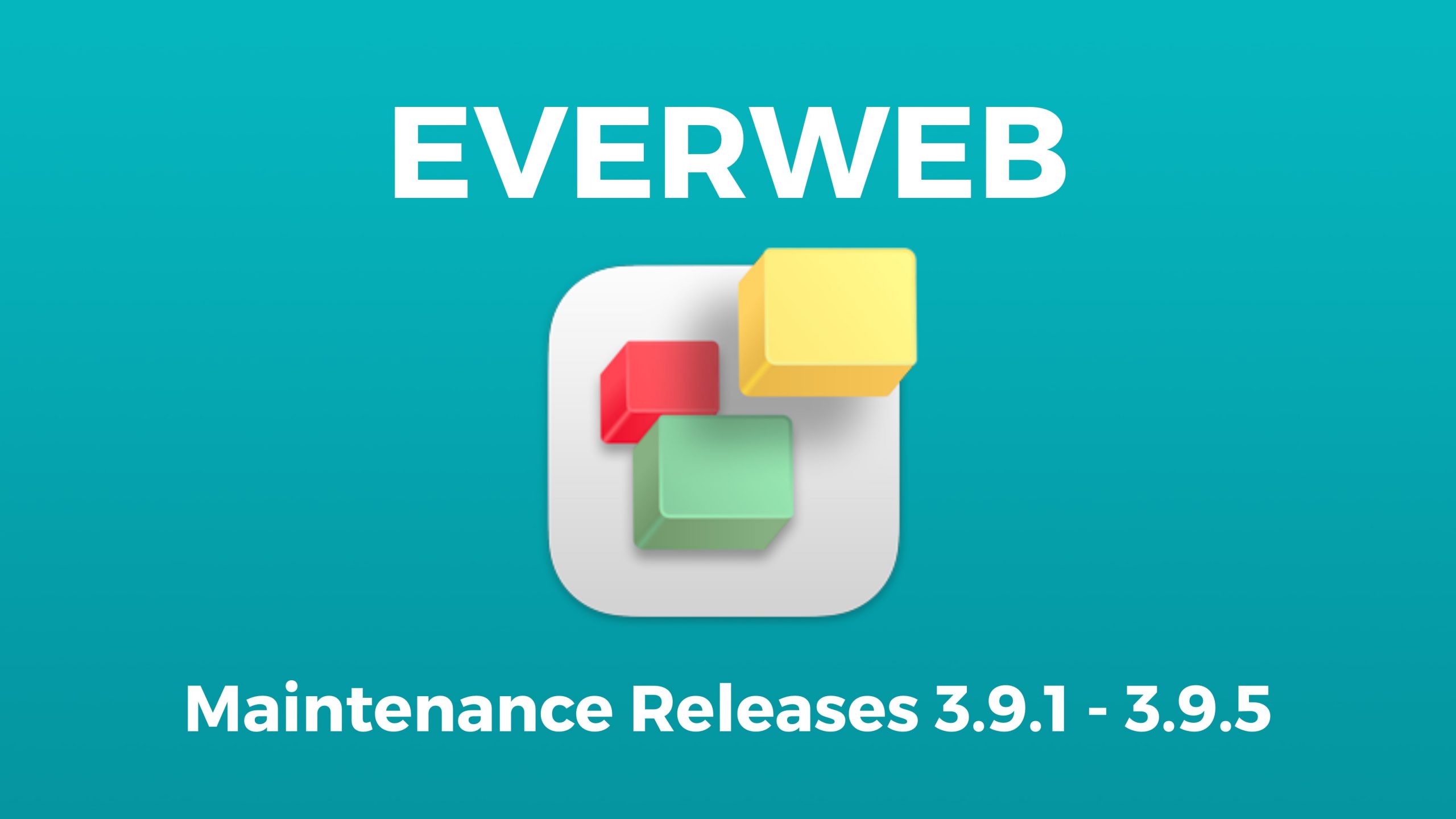EverWeb 3.9.6 Maintenance & Stability Release Now Available
Wednesday, May 10th, 2023
We are pleased to announce the immediate availability of EverWeb 3.9.6 for macOS and MS Windows. This is a maintenance and support release focusing mainly on fixes and improvements for EverWeb for Windows. The update is, however, recommended for both Windows and macOS EverWeb users.
EverWeb 3.9.6 is a free update for EverWeb + Hosting users and users with an active EverWeb Standalone Update & Support plan.
Which Version of EverWeb Is For You?
EverWeb is available in the following versions:
- If you are running Microsoft Windows 10 or 11, EverWeb 3.9.6 is available for you.
- If you are running an Intel Mac running OS X 10.10, macOS Yosemite, El Capitan, Sierra, High Sierra, Mojave, Catalina, Big Sur, Monterey or Ventura, EverWeb version 3.9.6 is available for you.
- If you are running an Apple Silicon Mac running macOS Ventura, Monterey or Big Sur, EverWeb version 3.9.6 is available for you as a Universal Binary. EverWeb will run natively without the need to use Rosetta 2.
- If you are running OS X 10.7 – 10.9 (Lion, Mountain Lion, Mavericks) EverWeb version 2.9.1 is available for you.
- If you are running OS X 10.6 EverWeb version 2.5.2 is available for you.
When updating to the latest version of EverWeb, the update process will automatically download the correct version of EverWeb for your operating system.
New, Fixed and Improved In EverWeb 3.9.6
EverWeb version 3.9.6 includes the following:
[NEW] Easier to install Widgets on windows by draggging and dropping them into the Widgets list
[FIX] Widget preview updates on Windows did not always work correctly
[FIX] Fixed issues with duplicating Responsive Rows
[FIX] Fixed linking to external pages in some Widgets
[FIX] nofollow settings for links in Widgets works properly now
[FIX] Fixed some issues with importing iWeb galleries
[FIX] Improvements to message dialogs on Windows
[FIX] Some Image Slider Widget fixes on responsive pages
[FIX] Fixed typing issues in Styled Text Editor for Widgets on Windows
[CHG] Improvements to publishing with FTP and issues with time out errors
How To Update To EverWeb for Windows
You can easily update EverWeb for Windows by either:
- Launching EverWeb then opening a project file. From the Help menu at the top of the screen select ‘Check for Update’ or by
- Downloading EverWeb from the EverWeb website.
After downloading EverWeb, double click on the EverWebSetup.exe file. Note that the file name may have the version number appended to it and that you may need to initially trust the file to be able to download it.
Follow the instructions in the Installation Wizard until the installation is finished. You can delete the EverWebSetup.exe file afterwards by dragging it to the Recycle Bin.
How To Update To EverWeb for macOS
You can easily update EverWeb for macOS by either:
- Launching EverWeb then going to the EverWeb menu at the top of the screen and selecting ‘Check for Update’ or by
- Downloading EverWeb from the EverWeb website.
After downloading EverWeb, double click on the EVERWEB.DMG file. A window will open. Drag the EverWeb icon on to the Applications folder icon.
Once the file has been copied, you can close the installation window, delete the .DMG file and eject the
About Your EverWeb Update
Remember, you won’t lose any previous data when updating as your website project files are stored elsewhere on your computer.
The update is free for EverWeb + Hosting users and EverWeb Standalone users who are within their 1 year of free upgrades and support period.
You can easily check your EverWeb update period from your EverWeb-> Preferences… window on macOS, your Edit-> Options menu on Windows or from your client area.
If you have passed your one year of free EverWeb updates, you can purchase 1 more year of upgrades and support from your client area.
You can easily re-download earlier versions of EverWeb from your client area if you are not ready to purchase an additional year of updates and support.
Login to your client area and go to the ‘Manage Product’ page. On the left of this page, select ‘Downloads’ and choose the version of EverWeb that you need.
More Information About EverWeb
For more information about the new version of EverWeb, please check out the following resources:
- The EverWeb website which has up to the moment information in its blogging section
- New EverWeb videos on YouTube
- The EverWeb User Manual in EverWeb’s Help-> User Manual menu on macOS or Help-> User Manual menu on MS Windows
- The EverWeb Discussion Forum
If you can’t find what you need, or have any other questions, comments or feedback please let us know.
EverWeb on Social Media
You can also find EverWeb on the following social media platforms:








